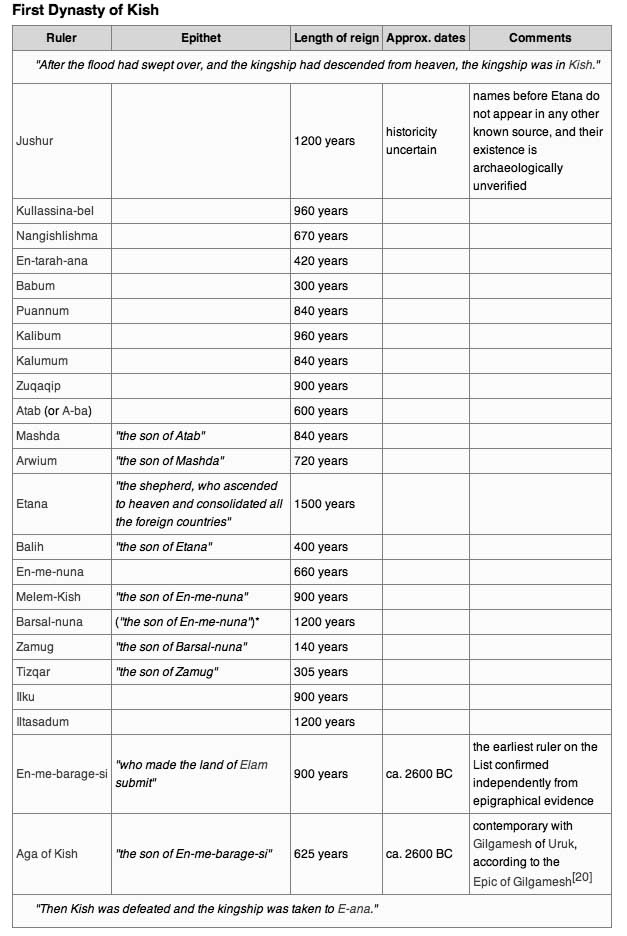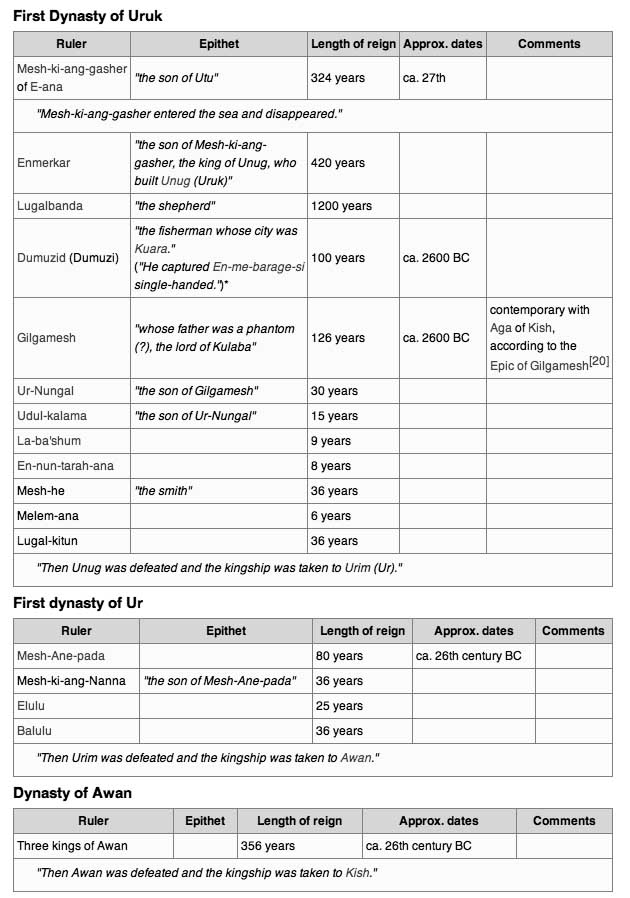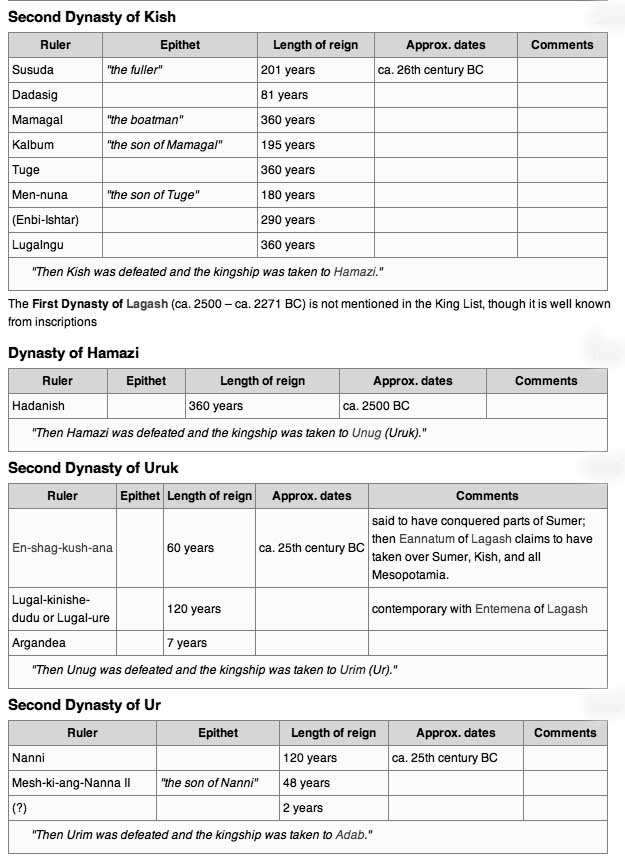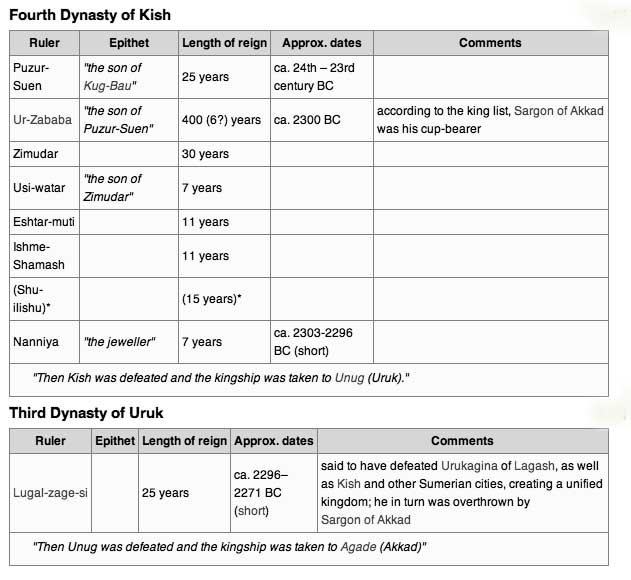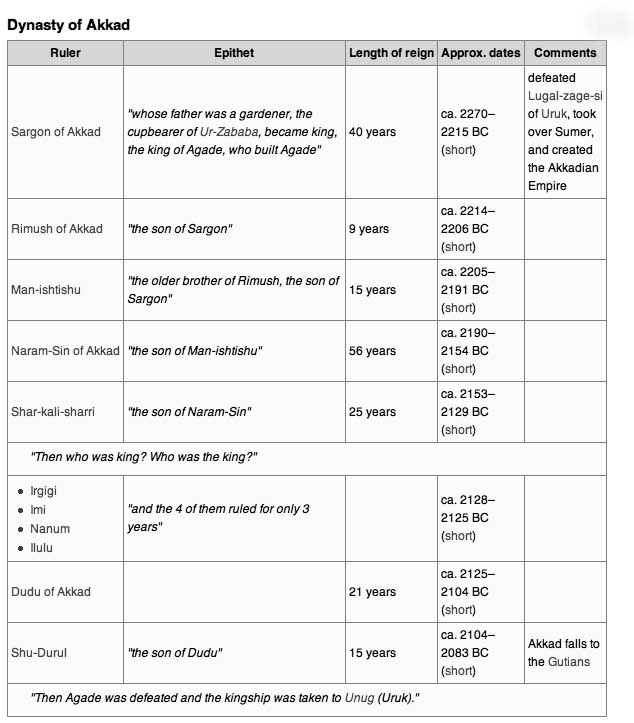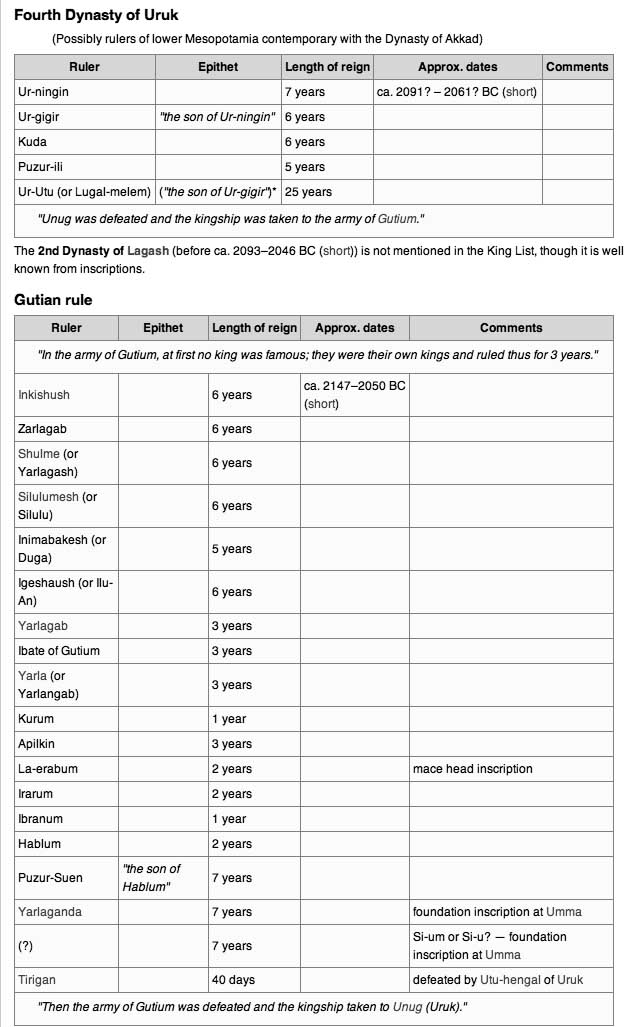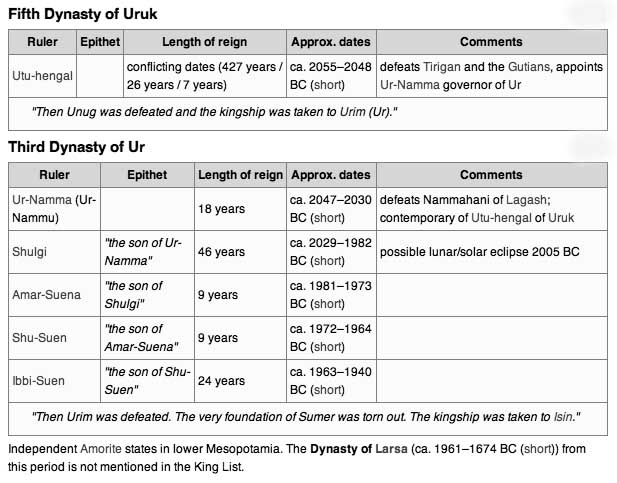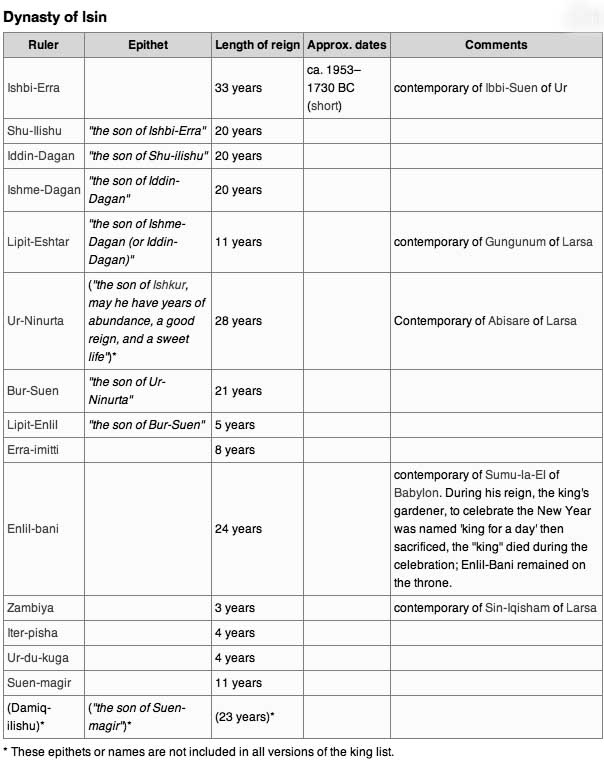



The Sumerian King List is an ancient manuscript originally recorded in the Sumerian language, listing kings of Sumer (ancient southern Iraq) from Sumerian and neighboring dynasties, their supposed reign lengths, and the locations of "official" kingship. Kingship was believed to have been handed down by the gods, and could be transferred from one city to another, reflecting perceived hegemony in the region. Throughout its Bronze Age existence, the document evolved into a political tool. Its final and single attested version, dating to the Middle Bronze Age, aimed to legitimize Isin's claims to hegemony when Isin was vying for dominance with Larsa and other neighboring city-states in southern Mesopotamia.
The list blends prehistorical, presumably mythical predynastic rulers with implausibly lengthy reigns with later, more plausibly historical dynasties. Although the primal kings are historically unattested, this does not preclude their possible correspondence with historical rulers who were later mythicized. Some Assyriologists view the predynastic kings as a later fictional addition.
Only one ruler listed is known to be female: Kug-Bau "the (female) tavern-keeper", who alone accounts for the Third Dynasty of Kish. The earliest listed ruler whose historicity has been archaeologically verified is En-me-barage-si of Kish, ca. 2600 BC. Reference to this individual in the Epic of Gilgamesh has led to speculation that Gilgamesh himself may be historical.
Three dynasties are notably excluded from the list: the Larsa dynasty, which vied for power with the (included) Isin dynasty during the Isin-Larsa period; and the two dynasties of Lagash, which respectively preceded and ensued the Akkadian Empire, when Lagash exercised considerable influence in the region. Lagash in particular is known directly from archaeological artifacts dating from ca. 2500 BC.
The list is important to the chronology of the 3rd millennium BC. However, the fact that many of the dynasties listed reigned simultaneously from varying localities makes it difficult to reproduce a strict linear chronology.
The following extant ancient sources contain the Sumerian King List, or fragments of the list:
WB 444 (Weld-Blundell Prism)
Kish Tablet (Scheil dynastic tablet)
UCBC 9-1819 ("California Tablet")
Dynastic Chronicle (ABC 18)[5] including copies, K 11261+ and K 12054
Babyloniaca (Berossus)
Apkullu-list (W.20030, 7)
The first two sources (WB) are a part of the "Weld-Blundell collection", donated by Herbert Weld Blundell to the Ashmolean Museum.
WB 62 is a small clay tablet, inscribed only on the obverse, unearthed from Larsa. It is the oldest dated source (c. 2000 BC) containing the list.
WB 444 in contrast is a unique inscribed vertical prism, dated c. 1817 BC, although some scholars prefer c. 1827 BC.
The Kish Tablet or Scheil dynastic tablet is an early 2nd millennium BC tablet which came into possession of Jean-Vincent Scheil; it only contains king list entries for four Sumerian cities.
UCBC 9-1819 is a clay tablet housed in the collection of the Museum of Anthropology at the University of California. The tablet was inscribed during the reign of the Babylonian King Samsu-iluna, or slightly earlier, with a minimum date of 1712 BC.
The Dynastic Chronicle (ABC 18) is a Babylonian king list written on six columns, beginning with entries for the antideluvian Sumerian rulers. K 11261+ is one of the copies of this chronicle, consisting of three joined Neo-Assyrian fragments discovered at Library of Ashurbanipal.
K 12054 is another of the Neo-Assyrian fragments from Uruk (c. 640 BC) but contains a variant form of the antediluvians on the list. The later Babylonian and Assyrian king lists, preserved the earliest portions of the list well into the 3rd century BC, when Berossus' Babyloniaca popularized fragments of the list in the Hellenic world. In 1960, the Apkullu-list (Tablet No. W.20030, 7) or “Uruk List of Kings and Sages” (ULKS) was discovered by German archaeologists at an ancient temple at Uruk.
The list, dating to c. 165 BC, contains a series of kings, equivalent to the Sumerian antediluvians called "Apkullu".
Early dates are approximate, and are based on available archaeological data; for most pre-Akkadian rulers listed, this king list is itself the lone source of information. Beginning with Lugal-zage-si and the Third Dynasty of Uruk (which was defeated by Sargon of Akkad), a better understanding of how subsequent rulers fit into the chronology of the ancient Near East can be deduced. The short chronology is used here.
None of the following predynastic "antediluvian" rulers have been verified via archaeological excavations, epigraphical inscriptions, or otherwise. It is possible that they correspond to the Early Bronze Age Jemdet Nasr period culture which ended approximately 2900 BC, immediately preceding the dynasts.[17] It is also possible that they were fictional creations to make the kingdom seem more legitimate and ancient to its subjects which would explain the exaggerated lifespans and recurring and composite characters that have overwhelming similarities with their predecessors.
The following reigns were measured in Sumerian numerical units known as sars (units of 3600), ners (units of 600), and sosses (units of 60).

